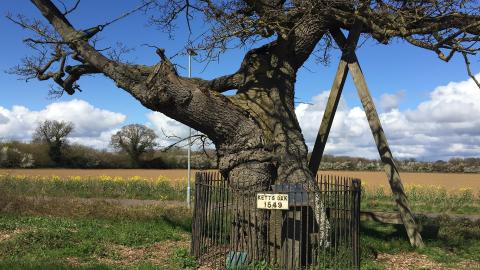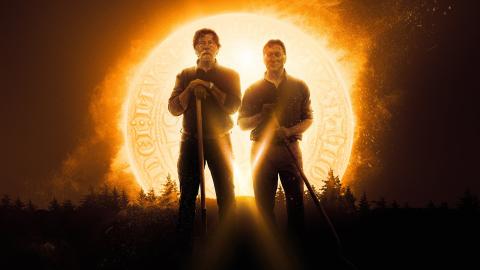
5 legendary lost cities of gold from Akakor to El Dorado
Photograph by Marv Watson | Unsplash Images
For centuries explorers have gone to South America in search of hidden cities that they believed were bursting with gold. Sketchy reports from returning missionaries, local indigenous stories, rumours traded at remote inns, and lost documents buried in dusty archives created an entire body of legends - fables of the lost cities of the South American jungle.
Are they mere myths, though? Many were convinced that the golden ruins were out there, somewhere.
Here we look at five of the most famous lost cities of Central and South America.
1. Akakor
Somewhere in a part of the Amazon rainforest, according to a story, is a secret underground city overloaded with treasure.
This place is Akakor.
Partly influencing the 2008 film Indiana Jones and the Kingdom of the Crystal Skull, the story of Akakor is just that – a story. It has been persuasively demonstrated to have been a hoax by a German-Brazilian tour guide in Brazil who styles himself as an indigenous chieftain of a tribe he calls the ‘Ugha Mogulala’.
The guide, Tatunca Nara (born Günther Hauck), claimed that Akakor was located underneath the jungles of Peru, in the border area with the Brazilian state of Acre, east of the Andes.
Nara told a reporter in the 1970s that his people were from Akakor, and his impeccable German was down to the fact that he was born to an indigenous Brazilian father and a German missionary mother.
Nara claimed the history of his people was written down in a chronicle which stretched back to 10,041 BC. According to Nara, thousands of years ago an alien race came from a star system called ‘Schwerta’ and built a series of extensive underground cities in South America, including the hidden Akakor, Akanis and Akahim, but also the known cities of Cuzco and Machu Picchu.
Akahim, connected to the distant Akakor, was said by Nara to be on the border of Brazil and Venezuela. In 1979 Nara and a Swiss man named Schmid claimed to have found Akahim, though they were unable to bring back any evidence of their find, Schmid having lost, he said, his camera and film.
Nara took out three westerners on three different trips in the 1980s to discover Akakor – they never came back, but Nara did.
Akakor, if it ever existed, remains undiscovered.
2. Los Césares
The City of the Caesars (Spanish: Ciudad de los Césares (or simply, Los Césares) is a myth that takes us to the other end of the South American continent.
An 1836 book tells of a city built in 1599 by fleeing Spanish colonists. The Caesars was said to be located on an island in Lake Puyehue, east of Osorno in Chile.
The temples of the city were said to be covered in silver and could be seen gleaming for miles around. Everything in the palace from plates, chairs and utensils were of solid gold or silver.
The city in this account was said to have been destroyed around a century later. Later becoming entangled with other legends, this ‘Enchanted City’ was said to make those who happened upon it wildly rich.
Was it the hidden fortress of a band of refugee Conquistadores, or a mirage typical to the tales of weary travellers? Whatever the basis of the story, no evidence of the city has ever been found.
3. El Dorado
Undoubtedly the most famous legend of a lost city of gold is that of El Dorado, a term now almost synonymous with a naïve quest for riches (as well as a short-lived British soap opera from the 1990s).
In 1520, Spain was enraptured by reports from the Conquistador Hernán Cortés (1485-1547) of the riches of the New World. The Aztec emperor Moctezuma II (1466-1520) famously showered Cortés with lavish gold gifts. Not long after that, the emperor was dead, and on 13 August 1521, the Spanish completed their conquest of the Aztec Empire
For the indigenous people of the Americas, it was a brutal, devastating period, with European colonisers all convinced that behind every mountain was an indigenous tribe hiding heaps of gems and precious metals.
What encapsulated this magical yet deadly gold rush was the legend of El Dorado.
In 1529, the young governor of Venezuela, Ambrosius Dalfinger, set off to plunder his new territory. At Lake Maracaibo, he was told of a wealthy people deep in the interior. Their ruler was a man who was, they said, painted gold. He came to be known as the gilded man (in Spanish, ‘El hombre dorado’, or ‘El dorado’).
There is a factual basis for this. The Chibcha people of the northwest corner of South America have a ritual where they smear new kings with gold dust and submerge them in Lake Guatavita until the gold is washed off, an elaborate offering to the gods.
In 1536, Spanish explorer Gonzalo Jiménez de Quesada y Rivera (d. 1579) tortured and fought his way through the lands of the Chibcha and tracked down a cache of gold in the village of Hunsa. This was apparently a well-constructed place with straight streets and sturdy houses. The people were said to be weighed down with gold jewellery and have bags of gold dust in their homes. The local ruler lived in a house decorated with sheets of gold and his throne was plated in gold and festooned with emeralds.
Evidently, no one was satisfied that this was El Dorado, as subsequent decades saw yet more missions to seek the legendary paradise.
Sir Walter Raleigh famously mounted two expeditions in 1595 and 1616 to search for El Dorado. Some legends and accounts have described El Dorado as a country, with its capital being the fabled Ma-Noa. The search for the city has been wide, with Raleigh looking in the north of the South American continent, Fawcett in the Mato Grosso, and a more recent writer suggesting that Ma-Noa was the ancient Maya city of Palenque in southern Mexico.
4. Paititi
A fabled lost city of fabulous riches, for the Spanish colonists of the 16th and 17th centuries Paititi was the Aladdin’s Cave of the Americas.
Paititi was said to have been a powerful kingdom and a secret Inca city located deep inside the Peruvian Amazon. Tales from Jesuit priests, explorers, and travellers, who claimed to have been to the legendary utopia, spoke of trees hung with gold bells and a golden eagle atop a royal boat.
One mission to find Paititi was launched on the word of a priest, Benito de Ribera, in 1670. The missionary claimed to have visited Paititi, which he said was a kingdom of millions, ‘where nothing was more common than gold’. The expedition found nothing.
These tales of cities drowning in gold may well have been exaggerations, but some modern explorers and archaeologists believe Paititi could have existed. In the last 20 years, at least a dozen expeditions have been mounted to find Paititi, though no searches have so far proved conclusive.
5. The Lost City of Z
The life of Colonel Percy Fawcett (1867-1925?) was like a Hollywood film. (Which is probably why they made one about him, and why he is considered a possible inspiration for the character of Indiana Jones).
Said to be practically immune to the rigours of the jungle, the British Army officer and archaeologist spent the latter part of his on the trail of what would become a costly obsession for him – the search for the remains of ‘City Z’.
Fawcett believed that ‘City Z’ was once part of a ‘high’ civilisation that flourished anciently in Brazil. He believed that these places were nothing less than the first cities built by humans. He wrote that he was ‘certain that amazing ruins of ancient cities – ruins incomparably older than those of Egypt – exist in the far interior of the Matto [sic] Grosso’. He claimed to have seen evidence of such cities but finding ‘Z’ was his life’s mission.
He believed ‘Z’ to be in the region of the Xingu River, near the Serra do Cachimbo mountains.
In May 1925, Fawcett, his son Jack, and Raleigh Rimell, set off into the Amazon in search of the Lost City of Z. They were never seen again. Numerous rescuers went in search of Fawcett for years to come, but to no avail. Reports of Fawcett’s fate varied wildly – some said he lived as the king of a tribe; others say he was murdered.
One source claims there is evidence that Fawcett rediscovered the legendary capital of Muribeca, one of the lost cities detailed in a famous 18th-century travelogue by Francisco Raposo, which Fawcett consulted.
Today, it is believed that the ruined cities Fawcett had heard about may have been the complex of former settlements known as Kuhikugu, located in the lower Xingu River region, in the centre of Brazil.
If this is indeed ‘Z’, then it is far younger than Fawcett thought, being no more than 1500 years old.























